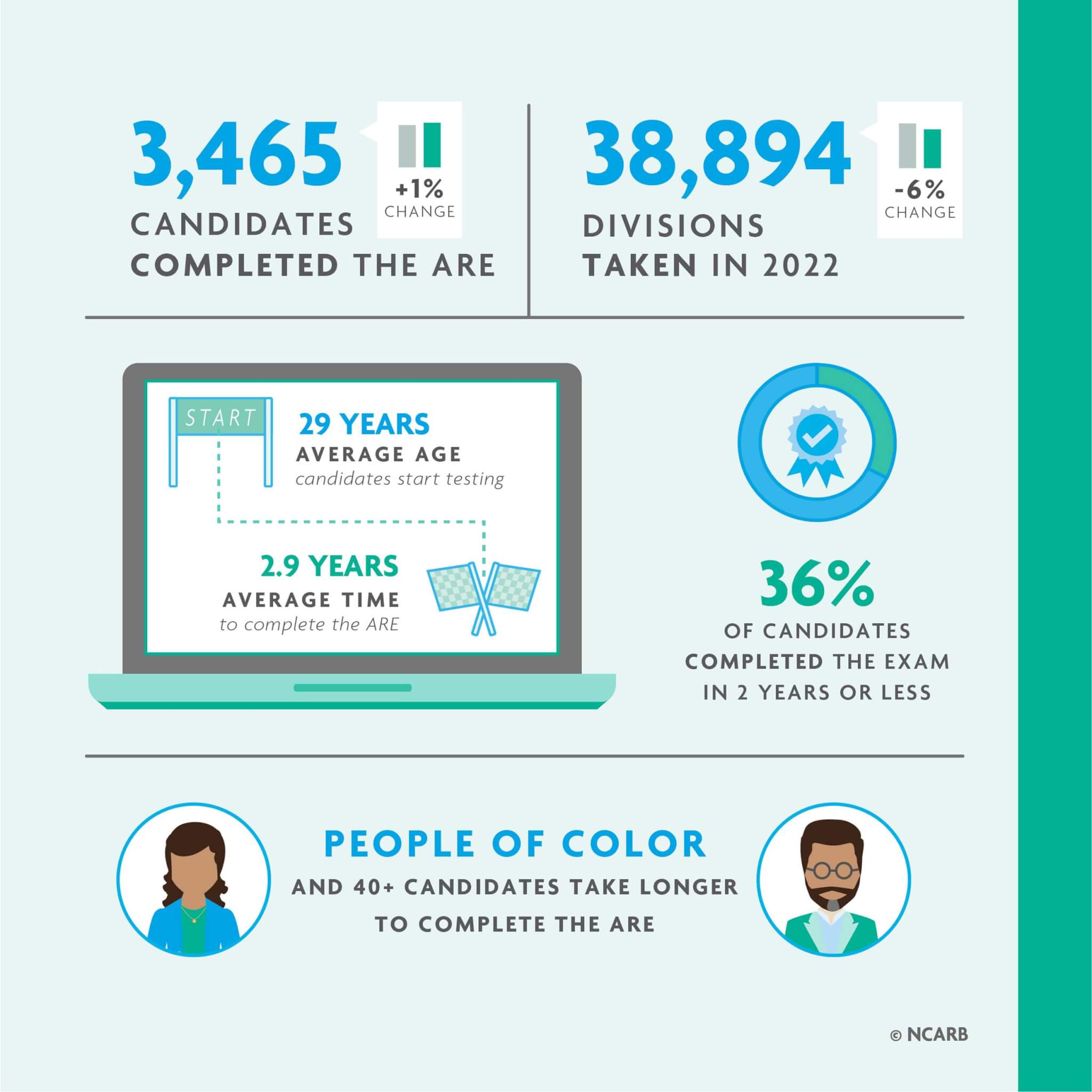Each year the National Council of Architectural Registration Boards (NCARB) releases NCARB by the Numbers, a data-filled report on the state of architectural licensure in the U.S. In recent years, NCARB has reported a decline in the number of candidates logging experience hours and pursuing Architect Registration Examination® (ARE) tests to achieve licensure.
The 2023 report signals this trend continues with some deviations. “While growth in the architect population has slowed, we have seen an uptick in Record holders who are licensed in multiple jurisdictions and abroad, demonstrating the continued value of professional mobility,” said NCARB CEO Michael J. Armstrong in the report.
The 2022 NCARB report showed that 35,000 candidates either reported experience, sat for an exam, or performed both—a 9 percent increase from 2021. In decline from the previous year, 3,400 candidates in 2023 received their licenses. NCARB attributes the decline in licensure, in recent years, largely to the pandemic’s effects on the economy, the industry, and individuals.

According to NCARB’s annual Survey of Architectural Registration Boards, the number of licensed architects in the U.S. has decreased by approximately 1 percent since 2021, or just about 1,600 individuals, to a total of 119,906. The number of reciprocal licenses held by architects rose from 2021 to 2022 by 6 percent, totaling 145,023 in 2022. NCARB says this number is 20 percent higher than the number of licensed architects, meaning the average licensed architect is able to practice in more than one of the 55 U.S. jurisdictions.


Much of this year’s NCARB By the Numbers report focused on data about the path to licensure, among this education, reporting experience, and examination. While 2022 saw a 9 percent increase in the number of candidates on track toward licensure, the average time it took to complete all the steps was 13.3 years—2 percent longer than the average time five years ago.
The experience program saw a decline in the number of candidates completing it for the sixth year in a row, with new program starts lower than they were in 2016 when the AXP program launched. According to the NCARB, the experience component takes candidates an average of 4.8 years to complete. Numbers in the latest report indicate that the amount of men and women logging experience is at near gender parity.

When broken down by race, Black candidates, at 36 percent, have the highest number of candidates still in pursuit of licensure 10 years in. NCARB has focused its attention on racial disparity within architectural licensure and the industry at large; in 2021 it released its second Baseline on Belonging report with the National Organization of Minority Architects (NOMA).

Data presented on the ARE indicates that people of color on average take longer to complete it. And overall the amount of time it takes candidates to complete the ARE has also risen since 2021 to 2.9 years—a three month increase with the average starting age for test takers reported to be 29. By gender men and women are about equal in the amount of time it takes to complete the examination component, with women earning their license 11 months sooner than men.
In addition to performance data on individual exam sections and the status of licensure in each of the 55 U.S. jurisdictions, the NCARB By the Numbers report also presented information on architecture education, stating that of new architects, 48 percent have two degrees and 85 percent have graduated from a NAAB-accredited program.

Last year, NCARB implemented a number of changes aimed at making the path to licensure more accessible (and affordable) to all candidates. Among these new changes are free practice exams for the ARE, accommodations for ESL candidates, and waiving fees for rescheduling an exam.
More information from the 2023 NCARB by the Numbers can be found here.











